R C & G
M - 3
RC&G doodlebug M-3 is another freelance design and was based on a D&RGW standard gauge prototype which was built in a similar manner. The two photos below show the inspiration for my model.
The prototype began life as as 52' wood day coach built by Pullman in 1898. In 1920 it was overhauled to become a baggage-coach combine. In 1927 it was converted into a piece of motive power with the installation of two 104 hp Continental 6 cylinder engines. In 1930 it was taken out of service and in 1938 the engines were removed and the car was used as a combine until 1951. The photos and plans for this car came from the May 1968 addition of Model Railroader. Drawings follow...
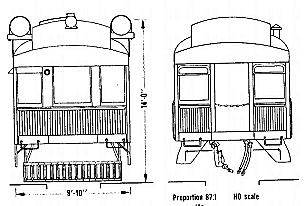
I had been looking for doodlebug plans when I ran across this one and it seemed to be perfect for bashing from a Bachmann combine. The next two photos show how this project started the floor and mounts for the power trucks. The floor is made from 1/4" oak veneer plywood and the power trucks are NWSL gauge 1 power trucks.

This shot with the unmodified Bachmann combine shows how much the body will be extended.
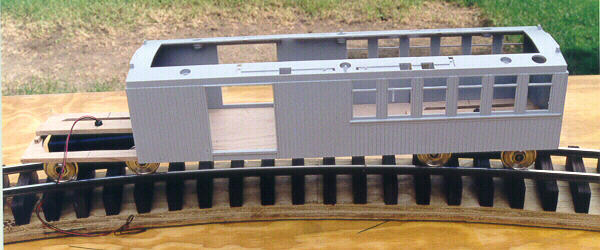
At the time of this portion of the construction I was using gel cell battery packs and this photo show one in the baggage section, note only one truck will be powered.
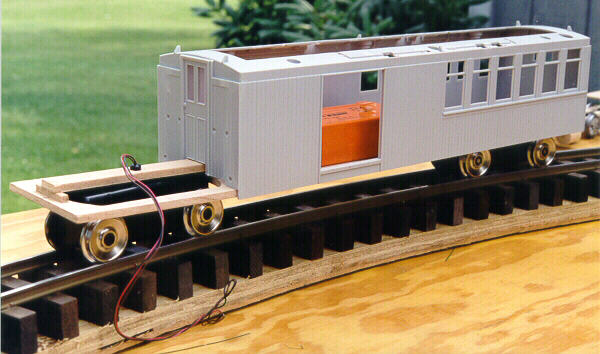
The next series of shots will show the progression of the assembly, in first photo the truck side frames have been installed and the basic cab structure is complete.
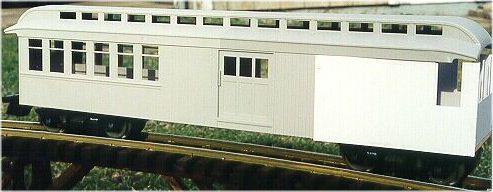
A close up of the truck side frame. The wheelbase of the NWSL trucks was longer than the Bachmann trucks so I cast resin side frames using parts from the Bachmann side frames to make the master. The truss rod across the bottom of the frame was made from brass strip and the brake shoes were cut off of the Bachmann side frames and attached to the new ones.

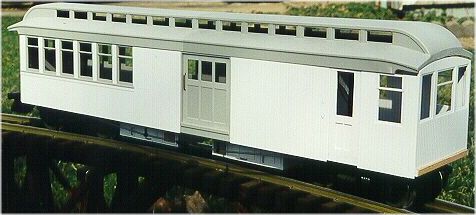
A closeup of the simulated under floor power units.

A nearly
finished view. Still to be completed are headlight, bell, marker lamps
plumbing to air tanks on roof, sun shades for engineers front and side
windows, grab irons for roof access, rain diverters over doors and
engineers side window, some additional lettering and a little light
weathering.
This was how it looked when
finished in the early 2000's and it was used for a number of years in
this configuration.
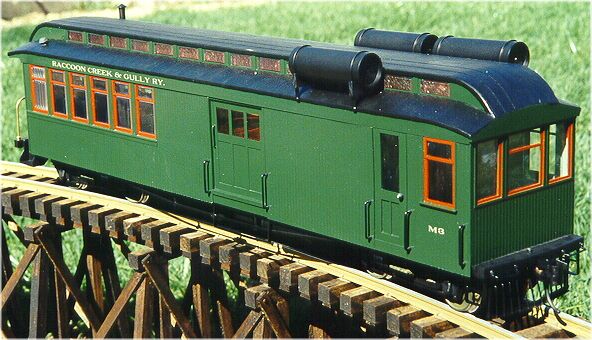
A view of the opposite side.
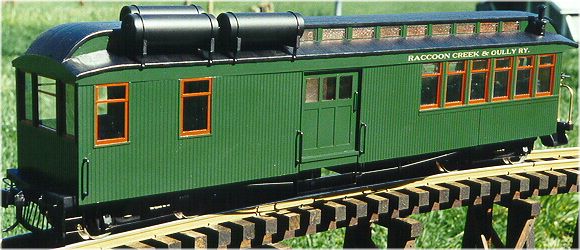
OK, fast forward ten years. Once the M-3 was running the priority to finish detailing dropped to nearly zero. After about five years the battery pack I had originally used ceased taking a charge and the M-3 became a shelf decoration. Finally in 2014 I decided to put in a new pack and while I had it apart decided to finish it up. New items include, new smaller tanks on the roof. Something didn't look right with the originals and it turned out I had scaled them off of the prototype plans which made them too large for narrow gauge. Since it was originally built I had also changed the couplers, I was using from the "G" size and these were changed to the gauge one size. The cab area got a bell, air horn, a headlight and sun visors for the motorman's windows and marker lamps. I replaced the handrails next to the motormans door and the baggage doors and added grab irons for access to the roof. A backup light and rear marker lamps were added as well as a few patrons in the passenger section and a motorman to drive the thing. The original Locolinc receiver was replaced with Revo unit I used a 12 cell sub 'C' size pack of nicads to replace the original gel cell. The drive truck was disassembled and lubricated. The final results are shown below.
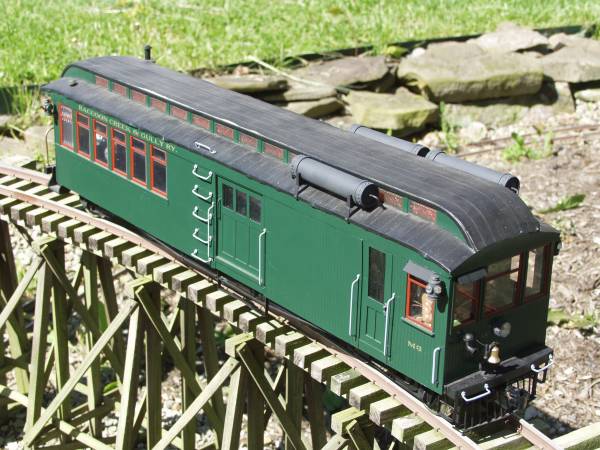
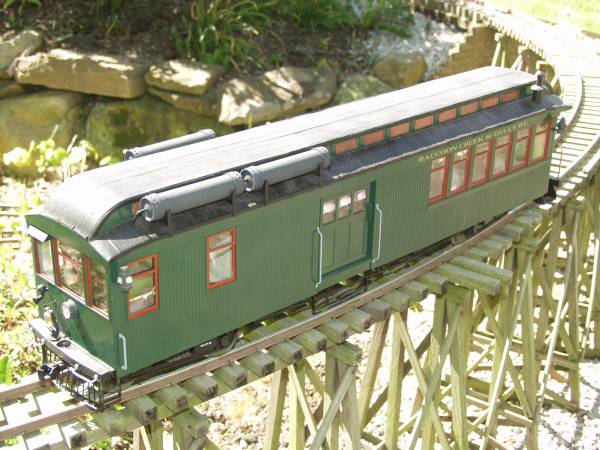
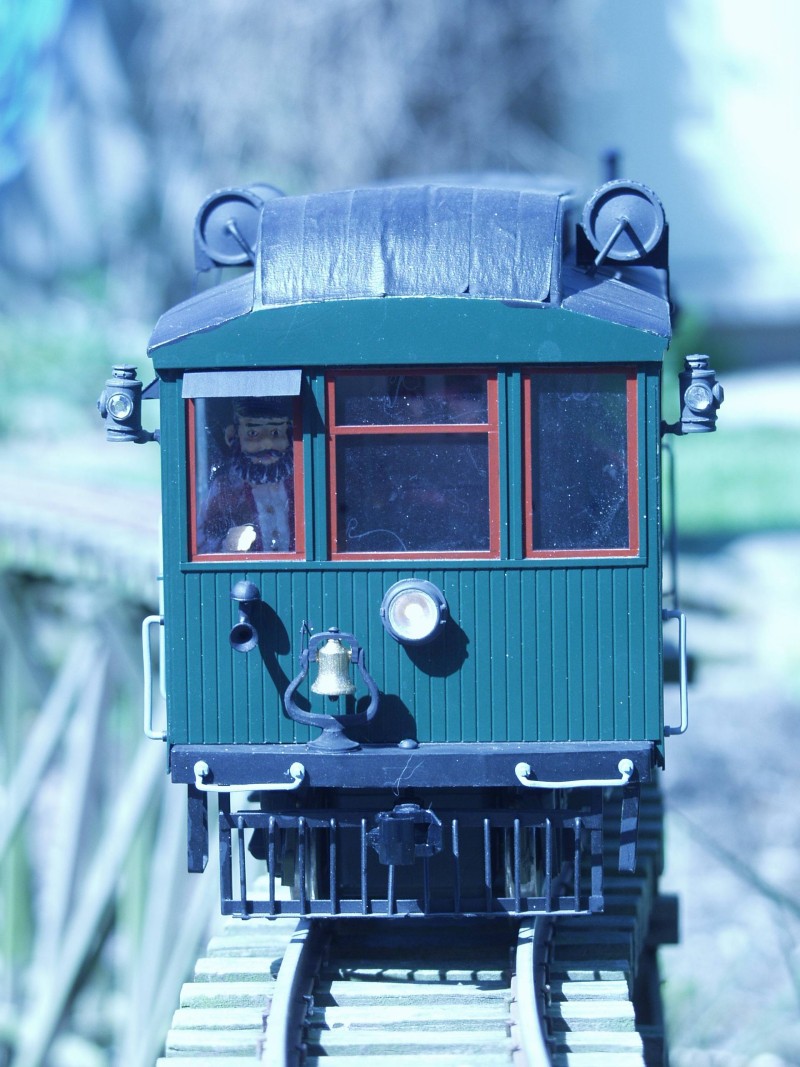
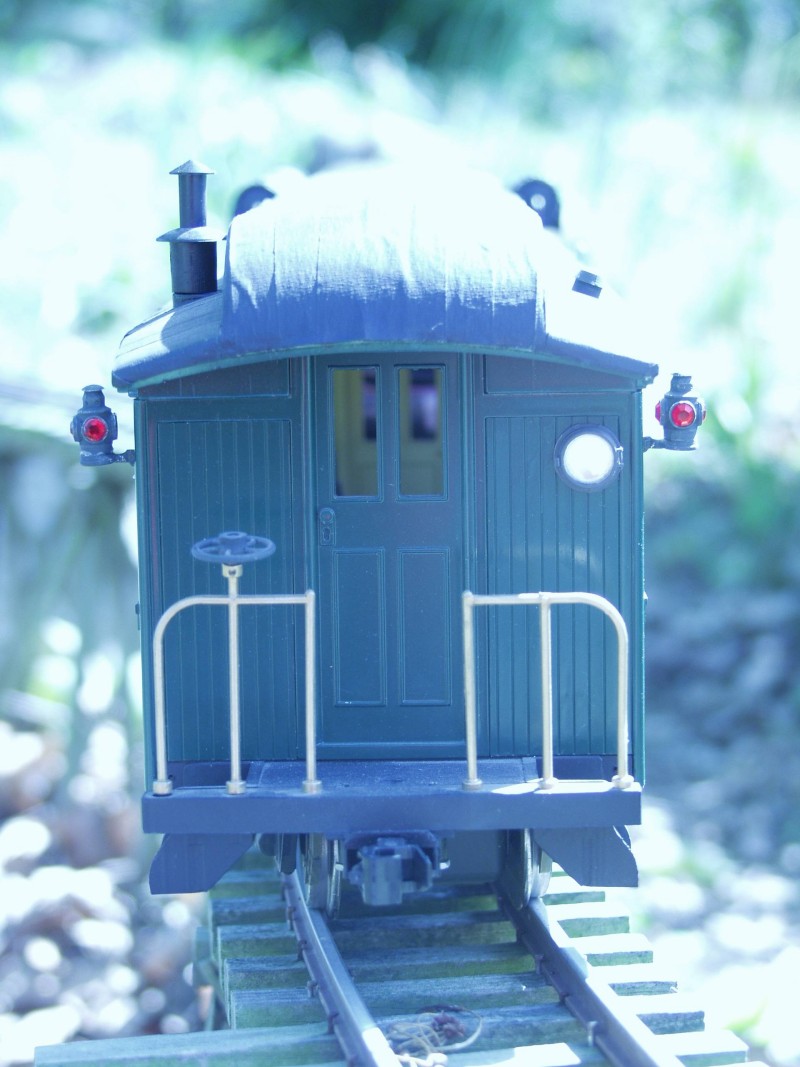
More recently
the battery was updated to a lithium cell.
Updated 3/12/19
Return to the Motive Power page